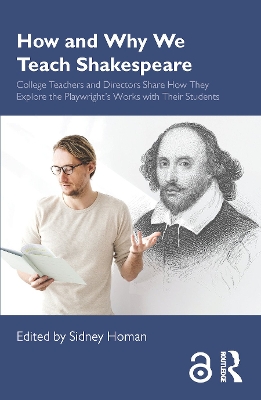In How and Why We Teach Shakespeare, 19 distinguished college teachers and directors draw from their personal experiences and share their methods and the reasons why they teach Shakespeare. The collection is divided into four sections: studying the text as a script for performance; exploring Shakespeare by performing; implementing specific techniques for getting into the plays; and working in different classrooms and settings.
The contributors offer a rich variety of topics, including:
- working with cues in Shakespeare, such as line and mid-line endings that lead to questions of interpretation
- seeing Shakespeare’s stage directions and the Elizabethan playhouse itself as contributing to a play’s meaning
- using the "gamified" learning model or cue-cards to get into the text
- thinking of the classroom as a rehearsal
- playing the Friar to a student’s Juliet in a production of Romeo and Juliet
- teaching Shakespeare to inner-city students or in a country torn by political and social upheavals.
For fellow instructors of Shakespeare, the contributors address their own philosophies of teaching, the relation between scholarship and performance, and—perhaps most of all—why in this age the study of Shakespeare is so important.
Chapter 10 of this book is freely available as a downloadable Open Access PDF at http://www.taylorfrancis.com under a Creative Commons Attribution-Non Commercial-No Derivatives (CC-BY-NC-ND) 4.0 license.
- ISBN10 0367245671
- ISBN13 9780367245672
- Publish Date 10 June 2019 (first published 15 May 2019)
- Publish Status Active
- Publish Country GB
- Publisher Taylor & Francis Ltd
- Imprint Routledge
- Format Paperback
- Pages 222
- Language English
